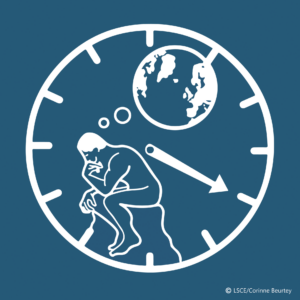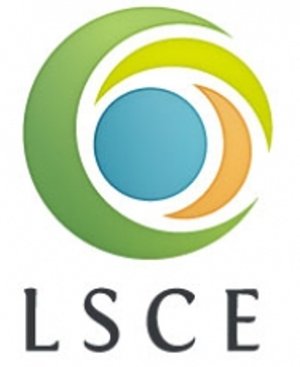Des résultats récents suggèrent que la minéralisation et la stabilisation du carbone organique du sol dépendent dans une large mesure de la géochimie du sol et du degré d’altération. Nous avons émis l’hypothèse que cette dépendance peut être traduite en modificateurs de taux de décomposition dans le contexte d’un modèle, et nous avons utilisé des données de la chronoséquence de Merced (CA, U.S.A., 100 ans – 3 Myr), représentant une séquence d’altération, pour tester, sur une échelle de temps de 1000 ans pour le spin-up du modèle, un modèle simple de carbone organique du sol (SOC) basé sur les concepts du modèle RothC26.3. La performance du modèle a été testée pour quatre niveaux d’information : (1) taux de décomposition connus pour chaque pool de SOC du modèle à des emplacements individuels de la chronoséquence, obtenus en calibrant le modèle avec des fractions de SOC mesurées et des apports de C spécifiques au site mesurés ; (2) taux de décomposition moyens pour chaque pool de SOC, corrigés par emplacement avec des modificateurs de taux basés sur des proxies géochimiques et des apports de C spécifiques au site mesurés ; (3) taux de décomposition moyens non corrigés par pool de SOC et apports de C spécifiques au site mesurés ; (4) taux de décomposition moyens non corrigés par pool de SOC et apports de C moyennés. Une statistique de l’erreur quadratique moyenne forfaitaire (RMSE) a été calculée pour chaque niveau d’information. Nous avons constaté que l’utilisation de mesures locales de l’apport de carbone frais entraînait une diminution de l’erreur quadratique moyenne de près de 15 % par rapport au niveau d’information (4). L’application de modificateurs de taux géochimiques a entraîné une réduction supplémentaire de 20 %. Nous concluons donc qu’il est avantageux d’inclure des modificateurs de taux géochimiques dans ce modèle SOC. Nous avons répété cette analyse pour un modèle SOC à cinq bassins et à quatre bassins qui incluait ou excluait un bassin de matière organique inerte. En termes de RMSE forfaitaire, les deux modèles ont donné des résultats similaires, mais en comparant le pourcentage de carbone moderne (pMC) mesuré et simulé pour le SOC en vrac, nous avons conclu que le pMC mesuré était le mieux approché en utilisant un modèle SOC à quatre bassins (sans bassin de matière organique inerte). En outre, il est probable qu’un modèle à cinq bassins comprenant un bassin à décomposition très lente améliorerait encore les performances du modèle.
Référence : Finke P., Opolot E., Balesdent J., Behre A. A., Boeckxx P., Cornu S., Harden J., Hatté C., Williams E., Doetterl S., 2019. Can SOC modelling be improved by accounting for pedogenesis? Geoderma 338, 513-524. Doi: 10.1016/j.geoderma.2018.10.018


